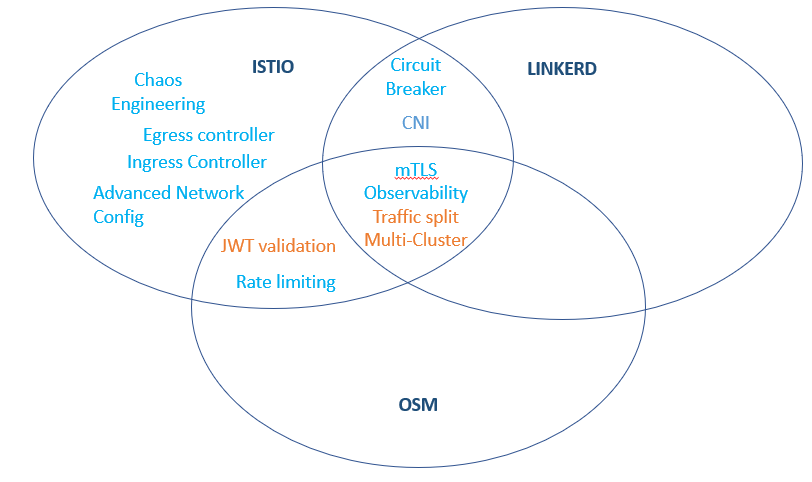- Print
- DarkLight
- PDF
How does OSM compare with Linkerd and Istio?
- Print
- DarkLight
- PDF
Many meshes are available, and Istio is undoubtedly the most popular but also the most complex. Linkerd and OSM aim at being lightweight meshes with a gentle learning curve. There are also other non-open source meshes as well. It is always dangerous to compare/benchmark products as you might overlook something, but here is, in a nutshell, what is available and what is not in the three products:

Caution: this is only a snapshot of the situation in 05/2023 and is highly subject to change.
It comes as no surprise that Istio includes all the features described above. They all share mTLS, Observability, Traffic split, and Multi-cluster setup. Items highlighted in orange indicate that features exist in at least two products, but their scope may vary. Both Linkerd and OSM partly implement features that help perform chaos engineering, but none offer built-in tools to inject faults.
OSM’s documentation improperly states (https://release-v1-2.docs.openservicemesh.io/docs/guides/traffic_management/circuit_breaking/) that OSM supports circuit breaking, but what is described is a way to control how many concurrent connections are allowed for a given service. This type of circuit breaker is more like an electrical rather than a software development pattern that detects and prevents failures.
From a networking perspective, a significant difference between OSM and the others is that OSM still needs to support CNI, which means it keeps relying on IP tables. Its init container must have the NET_ADMIN capability to write these IPs at application startup, which contradicts the default AKS policies.


